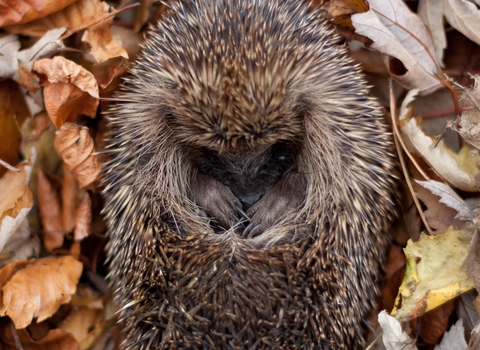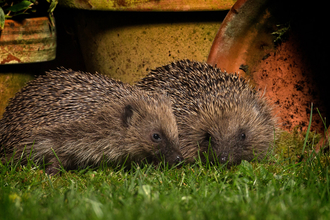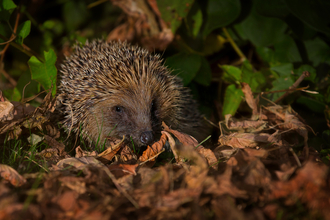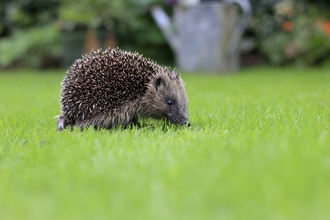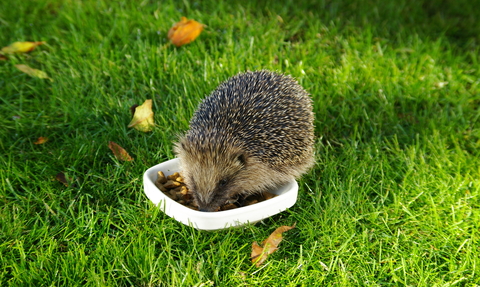
Hedgehog eating food © Gillian Day
Help a sick or injured hedgehog
Hedgehogs usually hibernate between November through to mid March, but they can sometimes be seen out and about during this period changing nesting sites.
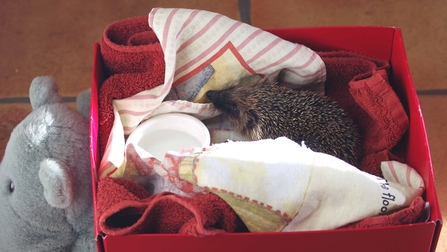
Hedgehog in care © Gillian Day
What to do next if you've found a hedgehog
It's unusual to see a hedgehog staggering around during winter or in daylight, so if you do see one and it looks unwell, it might need a helping hand. If you haven't already, contact The British Hedgehog Preservation Society, who can offer in depth advice and help you find a local rescue centre. Cumbria Wildlife Trust does not offer a general service for care and rehabilitation of sick or injured animals.
Should I try to help a sick or injured hedgehog myself?
Hedgehogs are wild animals, so being handled is a stressful experience. If you're unsure about the handling and caring of a sick or injured hedgehog, contact The British Hedgehog Preservation Society before trying to help.
If you decide to intervene, here's what to do:
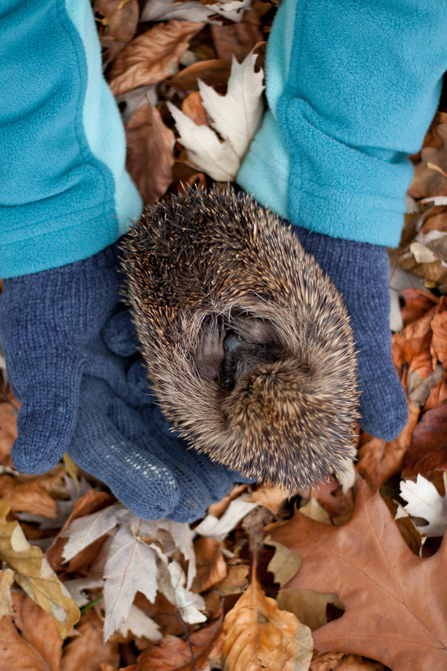
© Tom Marshall
- Prepare a cardboard box with high sides by lining it with a towel or scrunched up newspaper (so that the hedgehog can hide).
- Find yourself a pair of gardening gloves before gently scooping up the hedgehog into the box.
- Keep the box in a quiet, warm place: a hot water bottle filled with hot tap water wrapped in a towel can provide a gentle heat source – make sure it doesn’t go cold!
- You can provide some fresh water and meaty cat or dog food, but don't try to feed the hedgehog directly.

